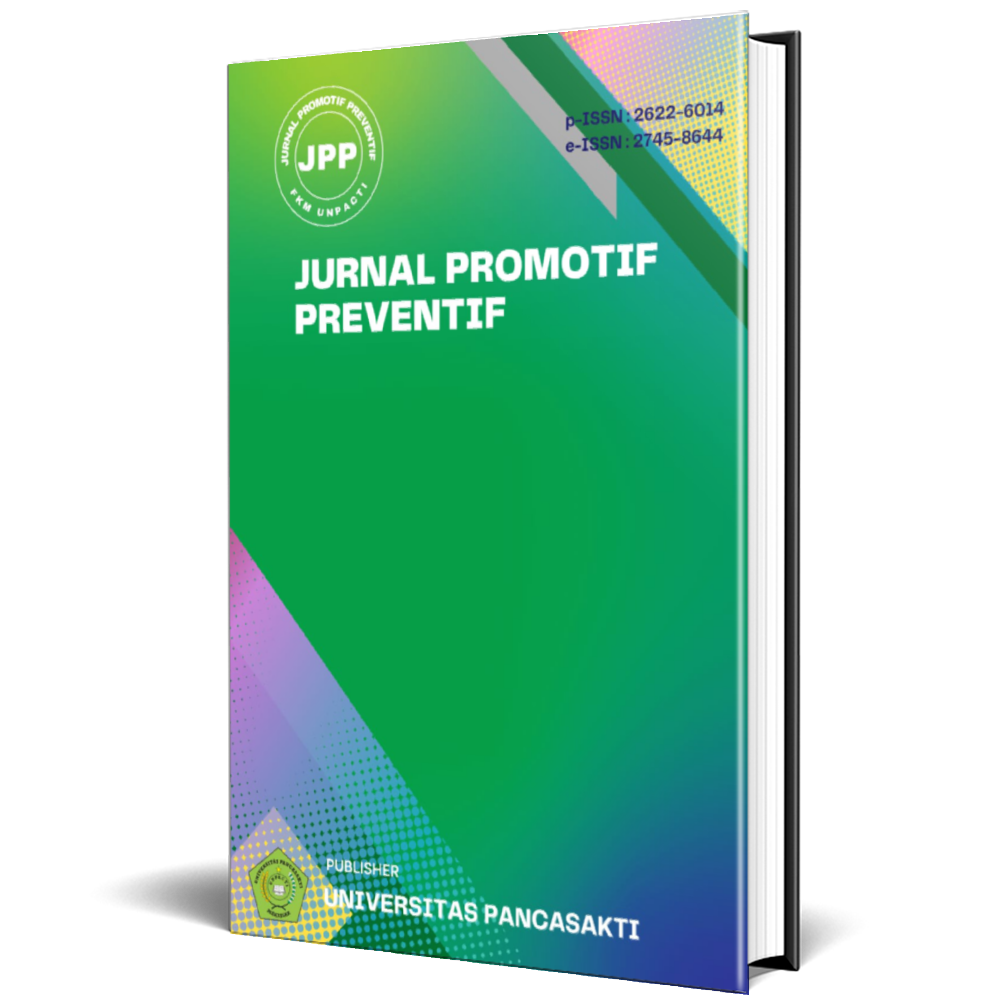Uji Efek Ekstrak Collagen Spons Laut (Stylissa flabeliformis) Terhadap Profil Kulit Mencit
Abstract
Indonesia merupakan negara dengan biodiversitas tinggi termasuk biota lautnya. Spons laut merupakan sumber alami yang dapat ditemukan dalam jumlah melimpah di perairan Indonesia dan mengandung berbagai komponen bioaktif termasuk collagen yang bermanfaat untuk kesehatan kulit. Pada penelitian ini, dilakukan suatu studi efek ekstrak collagen dari spons laut Stylissa flabelliformis terhadap profil kulit mencit (Mus musculus L.). Spons laut tersebut diambil dari perairan Lombok Utara Indonesia kemudian ekstraksi collagen dilakukan dengan menggunakan Tris-HCl Buffer diikuti dengan pengendapan collagen menggunakan asam asetat. Selanjutnya dilakukan karakterisasi ekstrak collagen dengan menggunakan FTIR-Spectroscopy. Studi efek ekstrak collagen terhadap profil mencit dilakukan selama 14 hari. Hasil penelitian ini menunjukkan bahwa pemberian ekstrak collagen spons laut Stylissa flabelliformis secara topikal ini dapat meningkatkan kadar minyak (sebum) dan kelembapan kulit (moisture), meskipun tidak signifikan. Sedangkan elastisitas kulit dan kandungan collagen kulit tidak terpengaruh. Dapat disimpulkan bahwa penggunaan ekstrak collagen ini dapat memperbaiki profil kelembapan kulit, sehingga dapat dikembangkan sebagai pelembap alami.
References
Barati, M., Jabbari, M., Navekar, R., Farahmand, F., Zeinalian, R., Salehi‐Sahlabadi, A., Abbaszadeh, N., Mokari‐Yamchi, A. & Davoodi, S.H., 2020. Collagen supplementation for skin health: A mechanistic systematic review. Journal of cosmetic dermatology, 19(11), pp.2820-2829.
Barros, A.A., Aroso, I.M., Silva, T.H., Mano, J.F., Duarte, A.R.C. & Reis, R.L., 2015. Water and carbon dioxide: Green solvents for the extraction of collagen/gelatin from marine sponges. ACS Sustainable Chemistry & Engineering, 3(2), pp.254-260.
Chung, J.H., Seo, J.Y., Choi, H.R., Lee, M.K., Youn, C.S., Rhie, G.E., Cho, K.H., Kim, K.H., Park, K.C. & Eun, H.C., 2001. Modulation of skin collagen metabolism in aged and photoaged human skin in vivo. Journal of Investigative Dermatology, 117(5), pp.1218-1224.
Cooper, E.A. & Knutson, K., 1995. Fourier transform infrared spectroscopy investigations of protein structure. Physical methods to characterize pharmaceutical proteins, pp.101-143.
Efendi, H.T., 2019. Uji Aktivitas Antibakteri Ekstrak Aseton Sponge Petrosia Sp. Asal Perairan Lombok. Orbital Chemistry Journal, 1(2), pp.79-83.
Farage, M.A., Miller, K.W., Elsner, P. & Maibach, H.I., 2008. Intrinsic and extrinsic factors in skin ageing: a review. International journal of cosmetic science, 30(2), pp.87-95.
Giam, Y.C., Hebert, A.A., Dizon, M.V., Van Bever, H., Tiongco-Recto, M., Kim, K.H., Soebono, H., Munasir, Z., Diana, I.A. & Luk, D.C.K., 2016. A review on the role of moisturizers for atopic dermatitis. Asia Pacific Allergy, 6(2), pp.120-128.
Hou, H., Li, B., Zhang, Z., Xue, C., Yu, G., Wang, J., Bao, Y., Bu, L., Sun, J., Peng, Z. & Su, S., 2012. Moisture absorption and retention properties, and activity in alleviating skin photodamage of collagen polypeptide from marine fish skin. Food Chemistry, 135(3), pp.1432-1439.
Julianti, E., Singgih, M., Ikram, M.R., Naufal, A., Putra, M.Y. & Hadi, T.A., 2019, October. Antimicrobial activity of fungi isolated from the marine sponges collected from Sekotong Beach Lombok, Indonesia. In IOP Conference Series: Earth and Environmental Science (Vol. 339, No. 1, p. 012058). IOP Publishing.
Kong, J. & Yu, S., 2007. Fourier transform infrared spectroscopic analysis of protein secondary structures. Acta biochimica et biophysica Sinica, 39(8), pp.549-559.
LODéN, M., WIRéN, K., Smerud, K., Meland, N., HøNNåS, H., MøRK, G., Lützow-Holm, C., Funk, J. & Meding, B., 2010. Treatment with a barrier-strengthening moisturizer prevents relapse of hand-eczema. An open, randomized, prospective, parallel group study. Acta dermato-venereologica, 90(6), pp.602-606.
Moros, J., Garrigues, S. & de la Guardia, M., 2010. Vibrational spectroscopy provides a green tool for multi-component analysis. TrAC Trends in Analytical Chemistry, 29(7), pp.578-591.
Ng, P.K. dan Rahayu, D.L., 2020. A new genus and species of pilumnid crab (Decapoda: Brachyura: Pilumnidae) symbiotic with the sponge Callyspongia Duchassaing & Michelotti, 1864 (Porifera: Demospongiae: Callyspongiidae) from Lombok, Indonesia; the identity of Pseudactumnus pestae; and a review of symbiosis in the Pilumnidae. The Journal of Crustacean Biology, 40(6), pp.918-932.
Pallela, R., Ehrlich, H. & Bhatnagar, I., 2016. Biomedical applications of marine sponge collagens. Marine Sponges: Chemicobiological and Biomedical Applications, pp.373-381.
Parisi, J.R., Fernandes, K.R., Avanzi, I.R., Dorileo, B.P., Santana, A.D.F., Andrade, A.L., Gabbai-Armelin, P.R., Fortulan, C.A., Trichês, E.D.S., Granito, R.N. & Renno, A.C.M., 2019. Incorporation of collagen from marine sponges (spongin) into hydroxyapatite samples: characterization and in vitro biological evaluation. Marine Biotechnology, 21, pp.30-37.
Purnamawati, S., Indrastuti, N., Danarti, R. & Saefudin, T., 2017. The role of moisturizers in addressing various kinds of dermatitis: a review. Clinical medicine & research, 15(3-4), pp.75-87.
Singh, P., Benjakul, S., Maqsood, S. & Kishimura, H., 2011. Isolation and characterisation of collagen extracted from the skin of striped catfish (Pangasianodon hypophthalmus). Food chemistry, 124(1), pp.97-105.
Quan, T., Little, E., Quan, H., Voorhees, J.J. & Fisher, G.J., 2013. Elevated matrix metalloproteinases and collagen fragmentation in photodamaged human skin: impact of altered extracellular matrix microenvironment on dermal fibroblast function. The Journal of investigative dermatology, 133(5), p.1362.
Swantara, I.M.D., Supriyono, A. & Trinoviani, M., 2007. Isolasi dan identifikasi senyawa toksik pada spons dari perairan Gili Sulat-Lombok. J. Kimia, 1(2), pp.67-69.
Swatschek, D., Schatton, W., Kellermann, J., Müller, W.E. & Kreuter, J., 2002. Marine sponge collagen: isolation, characterization and effects on the skin parameters surface-pH, moisture and sebum. European Journal of Pharmaceutics and Biopharmaceutics, 53(1), pp.107-113.
Summey Jr, B.T. & Yosipovitch, G., 2006. 12 Itch Associated with Dryness of the Skin: the Pathophysiology and Influence of Moisturizers. Dry Skin and Moisturizers, p.127.
Trianawati, M.L., Suhartono, M.T., Syah, D. & Chasanah, E., 2008. Silica, a polimerized silicon dioxide, is widely used as raw materials for food industries, such as food packaging, filter agent, biomarkers and biosensor for various analysis. In biological sistem such as sponge, the formation of silica structure was directed by protein known as silicatein. The aims of this research were to extract silicatein-like protein isolated from sponge live surrounding the Nias and Lombok seacost Indonesia and to study their activity to polymerize tetraethoxyorthosilicate (TEOS .... In Forum Pasca Sarjana (Vol. 31, No. 2).
Tziveleka, L.A., Ioannou, E., Tsiourvas, D., Berillis, P., Foufa, E. & Roussis, V., 2017. Collagen from the marine sponges Axinella cannabina and Suberites carnosus: Isolation and morphological, biochemical, and biophysical characterization. Marine drugs, 15(6), p.152.
Umami, S.S., 2019. Karakterisasi Bakteri Simbion Spons Penghasil Enzim Protease dari Perairan Sekotong Lombok Barat. Celebes Biodiversitas, 2(2), pp.22-31.
Varani, J., Dame, M.K., Rittie, L., Fligiel, S.E., Kang, S., Fisher, G.J. & Voorhees, J.J., 2006. Decreased collagen production in chronologically aged skin: roles of age-dependent alteration in fibroblast function and defective mechanical stimulation. The American journal of pathology, 168(6), pp.1861-1868.
Vollmer, D.L., West, V.A. & Lephart, E.D., 2018. Enhancing skin health: By oral administration of natural compounds and minerals with implications to the dermal microbiome. International journal of molecular sciences, 19(10), p.3059.
Zhao, X., Zhang, X. & Liu, D., 2021. Collagen peptides and the related synthetic peptides: A review on improving skin health. Journal of Functional Foods, 86, p.104680.
Copyright (c) 2024 Anggit Listyacahyani Sunarwidhi, Rizqa Fersiyana Deccati, Farreh Alan Maulana, Ni Wayan Putri Utami, Ni Made Amelia Ratnata Dewi

This work is licensed under a Creative Commons Attribution-NonCommercial-ShareAlike 4.0 International License.


1.png)







